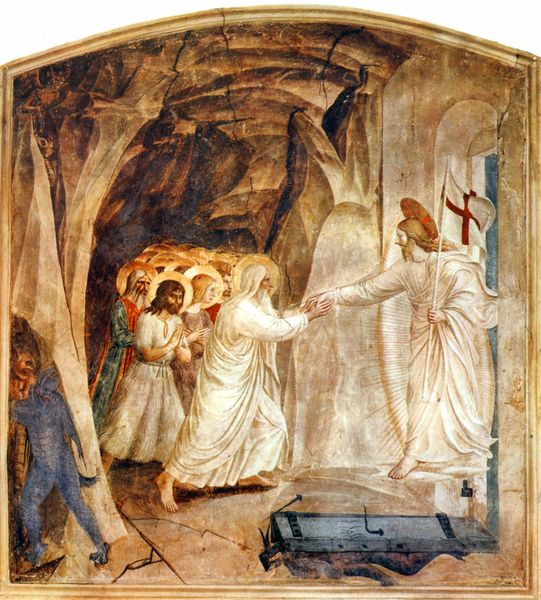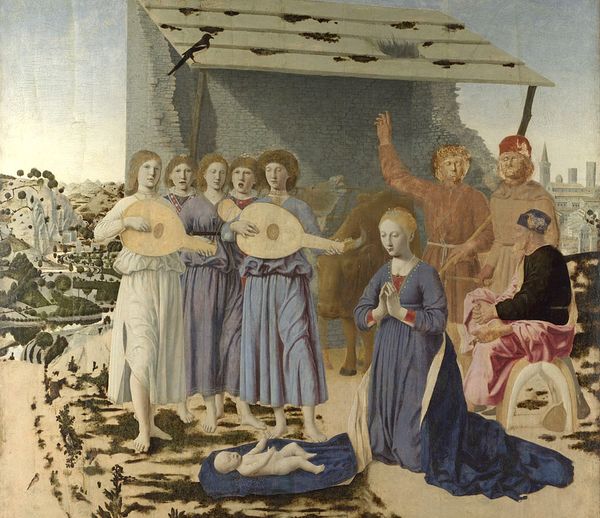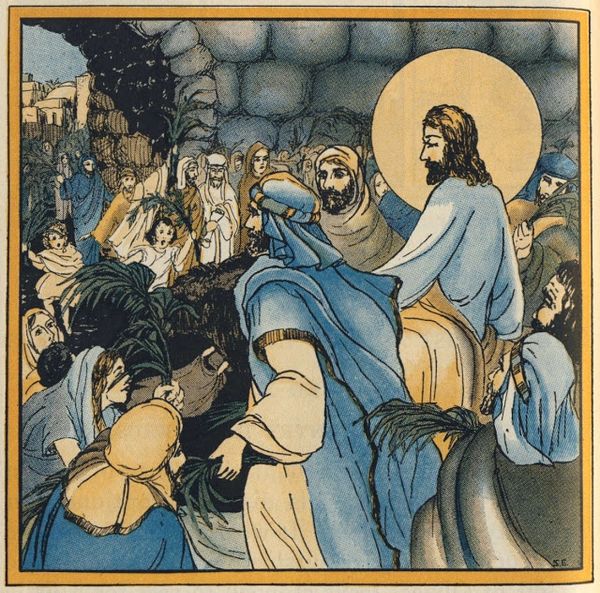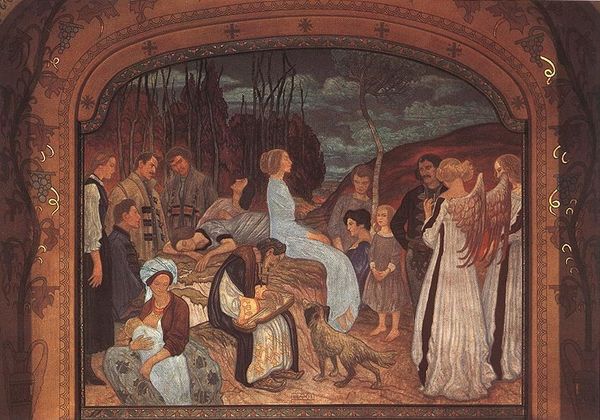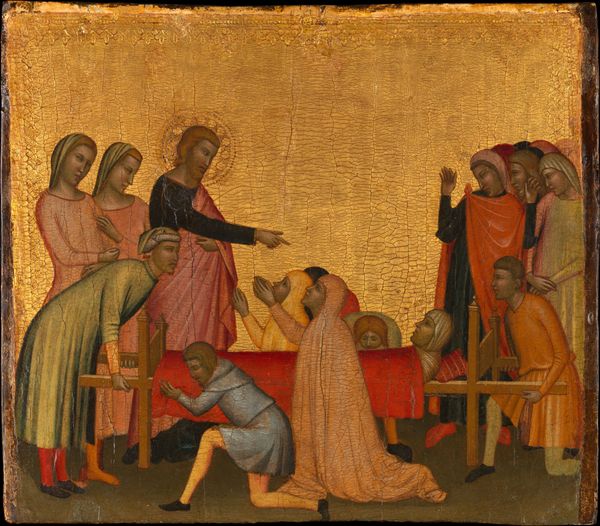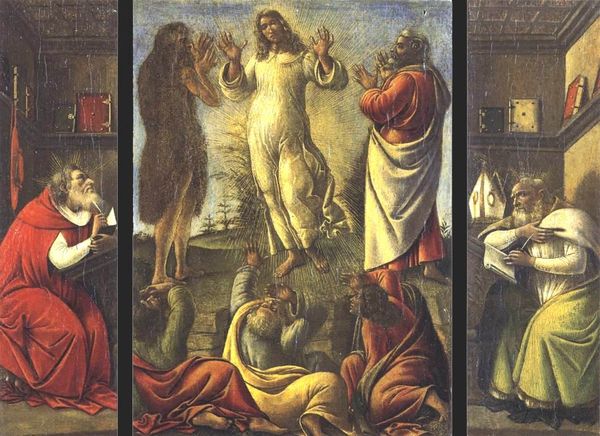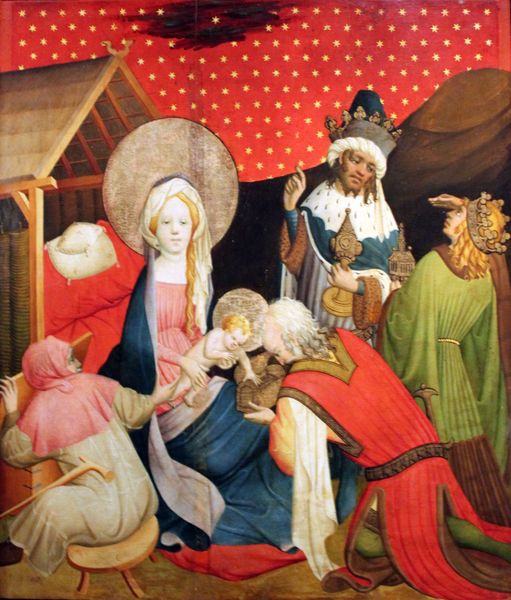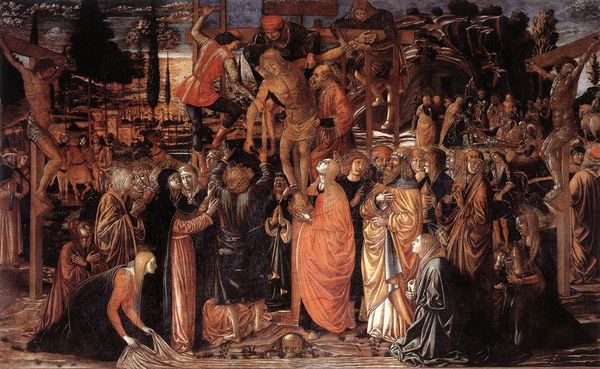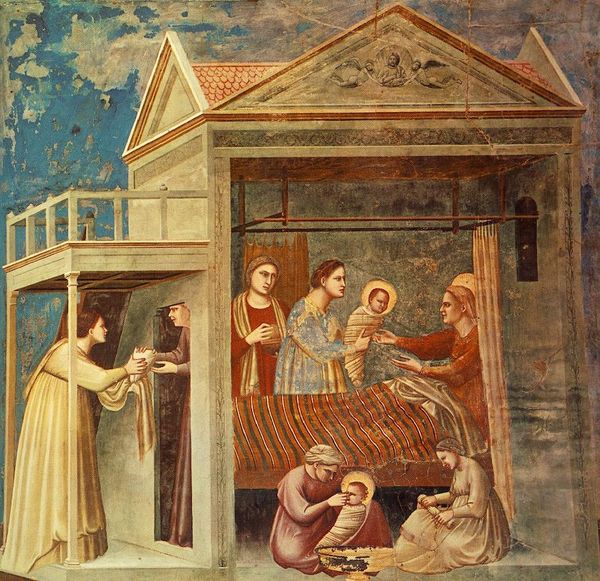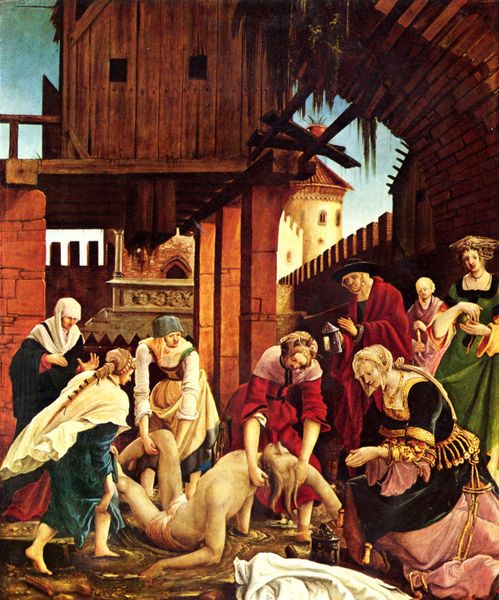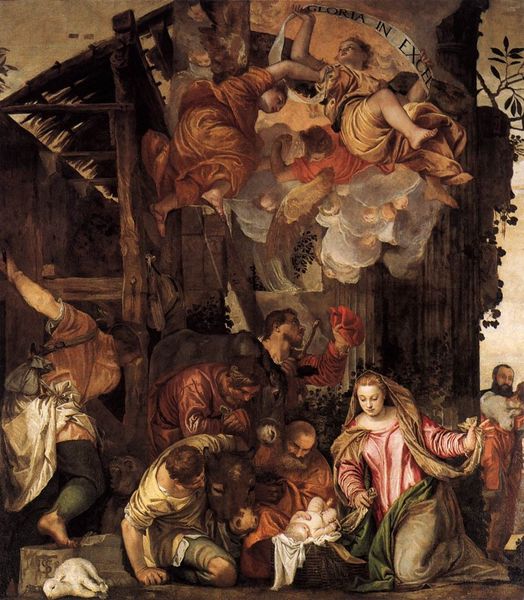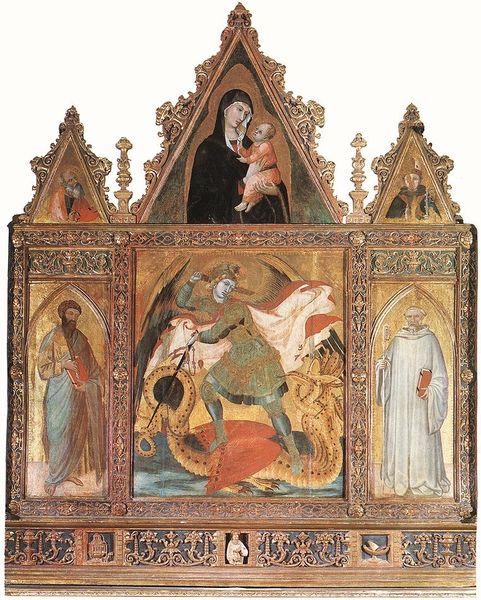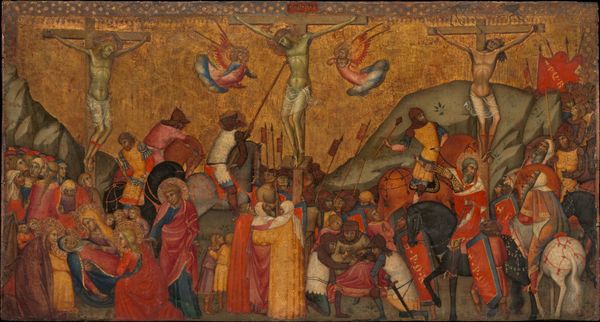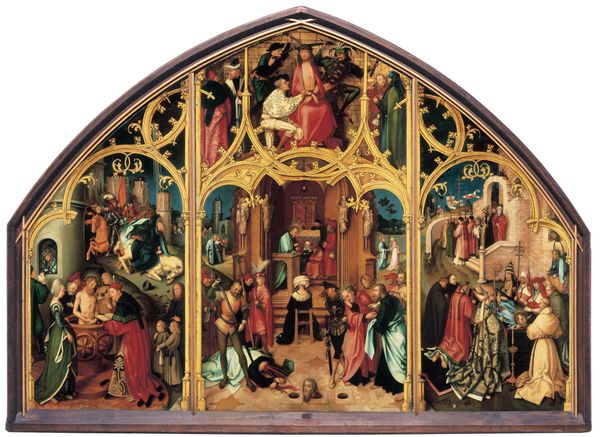
tempera, painting, oil-paint, textile, fresco, mural
#
art-nouveau
#
allegory
#
narrative-art
#
tempera
#
painting
#
oil-paint
#
landscape
#
textile
#
figuration
#
text
#
fresco
#
art nouveau
#
mural
Copyright: Public domain
Curator: This tempera and oil on canvas, entitled "Ego sum via, veritas et vita", which translates to "I am the way, the truth and the life," was completed in 1903 by Aladar Korosfoi-Kriesch. Editor: It has an immediate, almost dreamlike quality. The figures seem suspended between the earthly and ethereal, grounded yet weightless, rendered in a soft, muted palette. The rays feel symbolic but distant. Curator: The artist's choice of tempera likely contributes to that muted effect. Tempera offers a matte finish and requires careful layering, influencing the artwork's overall texture and even its appearance. Furthermore, Kriesch was heavily involved in the Arts and Crafts movement in Hungary and incorporated textile design into his wider artistic practise - that linear quality seems evocative of his engagement with woven arts. Editor: Absolutely, one can feel that craftsman's eye in the design. It's as though he is reinterpreting tapestry weaving into painting, and the linear rays bring the composition together. I wonder, are these rays dividing the work? Or binding it? The symmetry on the left-hand and right-hand sides, from a formal point of view, evokes the art nouveau fascination with symbolism. Curator: Contextually, that's incredibly important. Kriesch sought to develop a distinct Hungarian artistic language. Looking at those rays, one wonders whether those connections are based on his nationalistic ideology of bringing Hungarians together to unite and prosper. Also, remember he completed this at a time of enormous political and social upheaval. Editor: It is certainly doing some ideological and artistic work. There is tension, I feel. Is that due to our modern understanding of Art Nouveau, knowing that some works tried to grapple with industrial modernity, while some were keen to retreat from it entirely? Curator: The use of the Latin phrase brings us to your first point. By engaging religious ideology, the work speaks about labour, tradition, craft and, more widely, moral questions around value in society. By making an allegorical mural, Kriesch elevates those issues from common, everyday values, to grand gestures that can connect to his wider Hungarian nationalistic point of view. Editor: You've offered me an avenue to better grasp not just the visual vocabulary, but also how process and the climate that drove the artwork.
Comments
No comments
Be the first to comment and join the conversation on the ultimate creative platform.
